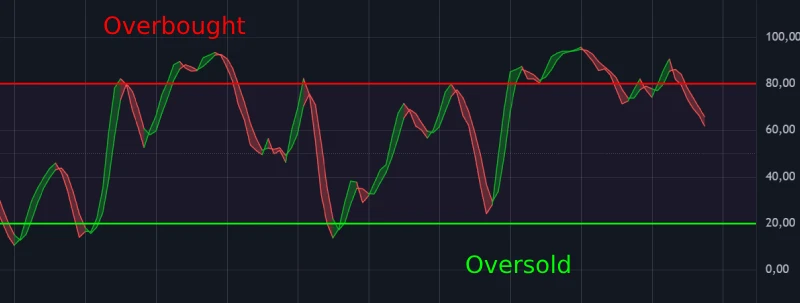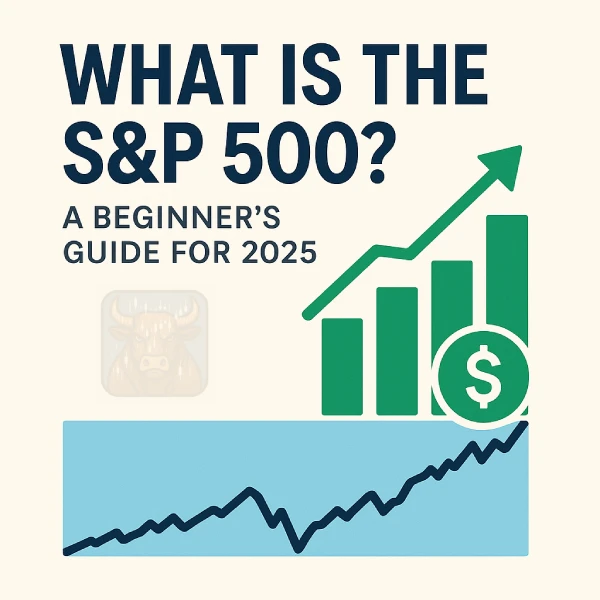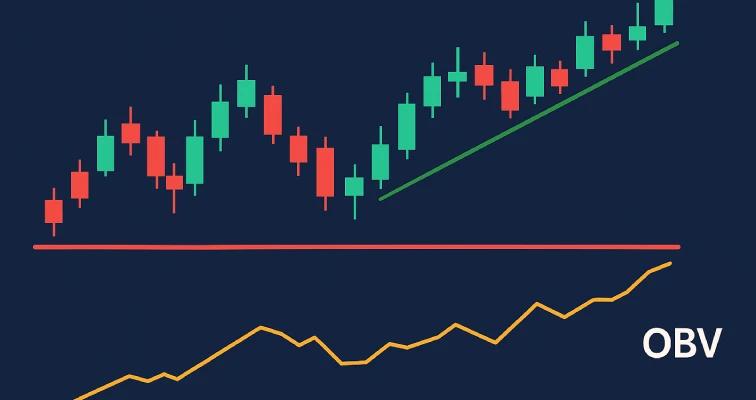📚 Fundamental Analysis Explained: Complete Beginner’s Guide (with Apple Example)

Fundamental analysis is the cornerstone of prudent investing, especially for long-term investments or identifying financially sound companies. Let’s break it down step by step:
🔍 What Is the Purpose of Fundamental Analysis in Stock Investing?
To determine the intrinsic value of a stock (or asset) by comparing it to its market price:
- If intrinsic value > market price → The stock is undervalued (buying opportunity).
- If intrinsic value < market price → The stock is overvalued.
📊 Part 1: Qualitative Analysis: Evaluating Company Fundamentals
Evaluates non-numerical factors affecting a company or industry.
1. Business Model
- What does the company do? Is it easy to understand?
- Example: Coca-Cola sells beverages (simple model) vs. Tesla (integrates tech, energy, etc.).
2. Competitive Advantage (“Moat”)
- What makes the company hard to replicate?
- Strong brands (Apple, Nike).
- Patents (e.g., pharmaceutical companies like Pfizer).
- Low-cost advantages (Walmart, Amazon).
3. Management & Leadership
- Who runs the company? Do they have experience and ethics?
- Example: Elon Musk (Tesla) vs. Tim Cook (Apple).
4. Industry & Macroeconomic Trends
- Is the sector growing? (e.g., renewable energy vs. coal).
- External factors: Regulations, technology shifts, social changes.
📈 Part 2: Quantitative Analysis
This is where the numbers come in. Key financial statements:
📑 Key Financial Statements
- Balance Sheet:
- Assets: What the company owns (cash, property, inventory).
- Liabilities: What it owes (debts, payables).
- Shareholders’ Equity: Assets – Liabilities.
- Income Statement:
- Revenue: Total sales.
- Expenses: Production costs, salaries, etc.
- Net Profit: Revenue – Expenses.
- Cash Flow Statement:
- Does it generate real cash? (A company can be profitable but cash-poor).
🔢 Key Stock Ratios in Fundamental Analysis (P/E, ROE, Debt/EBITDA)
| Ratio | Formula | Purpose | Good Benchmark |
|---|---|---|---|
| P/E (Price-to-Earnings) | Share Price / EPS | Valuation | < 15 (varies by sector) |
| P/B (Price-to-Book) | Share Price / Book Value | Asset valuation | < 1 (undervalued) |
| ROE (Return on Equity) | Net Income / Shareholders’ Equity | Profitability | > 15% |
| Debt/EBITDA | Total Debt / EBITDA | Debt sustainability | < 3 |
| Dividend Yield | Annual Dividend / Share Price | Income return | 2-5% (stable) |
🏆 How to Apply Fundamental Analysis (Step-by-Step)
- Choose a sector: e.g., tech, healthcare, energy.
- Select companies: Compare 3-5 companies in the same sector.
- Qualitative analysis: Business model, competition, management.
- Review financials: Use tools like Yahoo Finance, Bloomberg.
- Calculate ratios: Compare to sector averages.
- Decide: Does the current price reflect true value?
📌 Coca-Cola vs. Pepsi: Fundamental Analysis Comparison
- Coca-Cola P/E: ~25 (expensive for its sector?).
- Pepsi ROE: ~50% (high efficiency).
- Debt/EBITDA: Coca-Cola = 2.5 (better than Pepsi = 3.1).
Conclusion: Coca-Cola may be more stable, but Pepsi offers higher profitability.
⚠️ Limitations of Fundamental Analysis
- Not useful for timing (when to buy/sell).
- Historical data ≠ future performance.
- Ignores market psychology.
🔹 Combine it with technical/sentiment analysis for better results.
🍏 Case Study how to analyze a stock step by step: Apple Stock (AAPL) Fundamental Analysis: 2023 Example

🔍 Step 1: Qualitative Analysis
1. Business Model
- What Apple does: Designs and sells hardware (iPhone, Mac, iPad), software (iOS, macOS), and services (Apple Music, iCloud).
- Revenue breakdown (2023):
- iPhone (52%), Services (22%), Mac (10%), Wearables (10%).
2. Competitive Advantage (“Moat”)
- Closed ecosystem: Products work better together (iPhone + Mac + Apple Watch).
- Strong brand: High customer loyalty.
- Innovation: Leads in chip development (M1/M2 processors).
3. Competition
- Main rivals: Samsung (hardware), Google (Android), Microsoft (software/cloud).
- Differentiation: Focus on privacy and user experience vs. competitors’ low prices.
4. Risks
- iPhone dependence: 52% of revenue from one product.
- Regulatory pressure: Antitrust scrutiny in the U.S. and Europe.
📊 Step 2: Quantitative Analysis (2023 Data)
1. Key Financial Statements
| Metric | Value (USD billions) |
|---|---|
| Annual Revenue | $394.3 |
| Net Profit | $99.8 |
| Total Debt | $109.5 |
| Free Cash Flow | $90.3 |
| Dividends Paid | $14.8 |
2. Fundamental Ratios
| Ratio | Formula | Calculation (AAPL) | Interpretation |
|---|---|---|---|
| P/E | Price / EPS | $180 / $6.13 = 29.4 | High vs. historical avg. (25). Overvalued? |
| ROE | Net Income / Equity | $99.8B / $62.5B = 16% | Good (tech sector avg: ~20%). |
| Debt/EBITDA | Total Debt / EBITDA | $109.5B / $120B = 0.91 | Low (minimal financial risk). |
| Dividend Yield | Annual Dividend / Price | $0.92 / $180 = 0.51% | Low (not a “dividend stock”). |
📌 Step 3: Valuation (Is It Overpriced?)
Method 1: Sector Comparison
- Apple’s P/E (29.4) vs. Tech sector avg. (25) → Apple appears overvalued.
- ROE (16%) vs. Microsoft (35%) → Less efficient but stable.
Method 2: Discounted Cash Flow (DCF)
(Simplified example)
- Project free cash flows (e.g., 5% annual growth).
- Discount rate: 8% (Apple’s risk level).
- Intrinsic value: ~$165/share (vs. $180 current).
- Conclusion: Current price is ~10% above fair value.
🎯 Final Analysis
✅ Strengths: Strong ecosystem, healthy balance sheet (low debt), solid cash flow.
❌ Weaknesses: High P/E, slow iPhone growth, low dividends.
🔹 Verdict: Apple is a solid long-term investment, but the current price (2024) seems slightly overvalued. Could be a buy on dips (e.g., if it falls to $150-160).
📉 How to Monitor Changes?
- Key events: Product launches, quarterly earnings.
- Metrics to watch: Services growth, China sales.
🎓Frequently Asked Questions (FAQ)
Is fundamental analysis better than technical analysis?
It depends on your strategy. Long-term investors often rely on fundamental analysis, while short-term traders prefer technical analysis.
What are the best tools for stock analysis?
Popular tools include Yahoo Finance, Morningstar, Finviz, and Bloomberg. For ratios, many investors use free platforms like Seeking Alpha.
Can beginners use fundamental analysis?
Yes. Fundamental analysis is a great starting point for anyone looking to understand how companies work and what drives stock prices.
💡 Want to Practice Yourself?
- Pick a company (e.g., Microsoft, Tesla).
- Find financials on: Yahoo Finance or Morningstar.
- Follow these steps and compare ratios to competitors.
(Next: Short Class 4 Part 2 – Technical Analysis Basics!)






